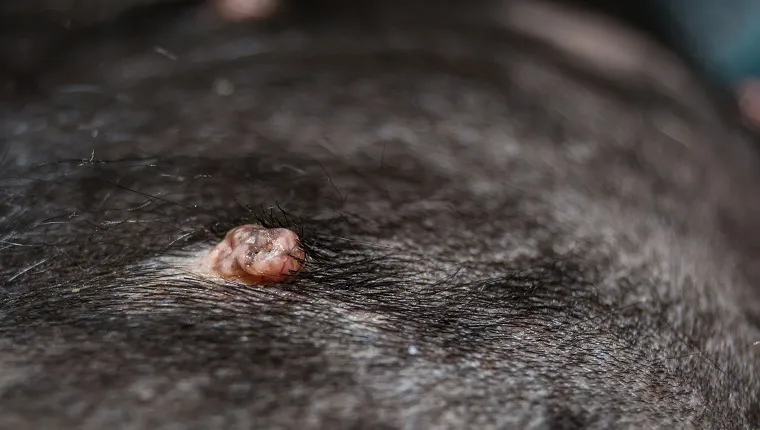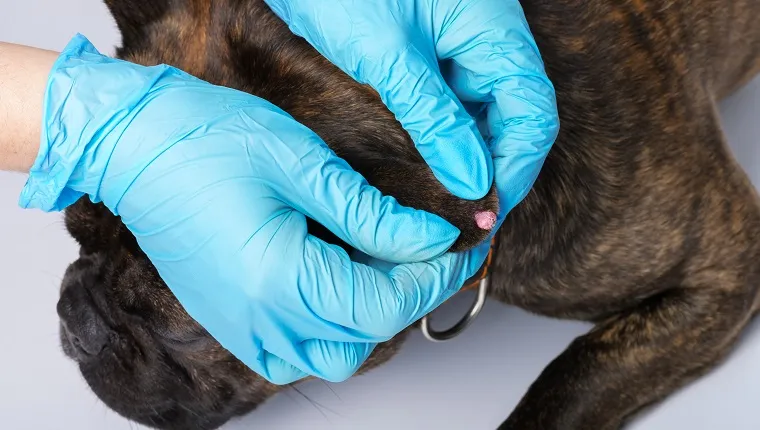Warts in dogs are benign tumors that begin to appear on the skin. The cause of the tumors, which some compare to looking like tiny cauliflower heads, are papilloma viruses, and the medical terms for these types of tumors is “papilloma.” They can pass from one dog to another, although dogs cannot pass them to humans.
Sometime a papilloma will clear up on its own as the dog’s immune system fights off the virus that caused it. But in cases of persistent warts or instances where they’re hindering the dog from going about their daily activities, a veterinarian may need to surgically removal them.
If you see signs that your dog might have warts, then you should consult your veterinarian for a proper diagnosis and course of treatment. Here’s what you should know about the symptoms, causes, and treatments of warts in dogs.
Symptoms Of Warts In Dogs
Warts in dogs are benign tumors on the skin. They often appear around the facial area and between the toes; although, they can appear anywhere on a dog’s body.
In some cases, warts can appear on areas of a dog’s body that end up impairing their daily movements, such as on their feet.
Younger dogs are usually more susceptible. Dogs with compromised immune systems can also be more likely to pick up warts. Some breeds are more predisposed as well, including Pugs and Cocker Spaniels.
Causes Of Warts In Dogs

The causes of warts in dogs are papilloma viruses. Dogs can pass papilloma viruses along to other dogs, oftentimes by coming into contact with broken skin.
However, dogs cannot pass papilloma viruses on to humans or cats.
Treatments For Warts In Dogs
If you notice that your dog is suffering from warts, your veterinarian will be able to help you deal with the condition. Your vet will perform a physical examination of your dog to confirm a diagnosis. They’ll also ask how long your dog has had warts in order to help determine the best course of treatment.
In some cases, the bumps will simply clear up by themselves.
If there are a large number of warts on your dog, or if they seem to have become infected or are bleeding, then your vet might suggest a surgical procedure to remove them. They can carry out the removal procedure with lasers, with a scalpel, or by freezing the papilloma.
Has your dog developed warts? Did your vet remove them, or just advise you to let them be? Tell us all about it in the comments below.









